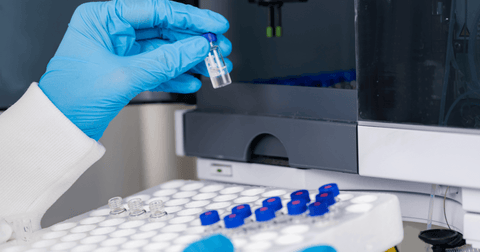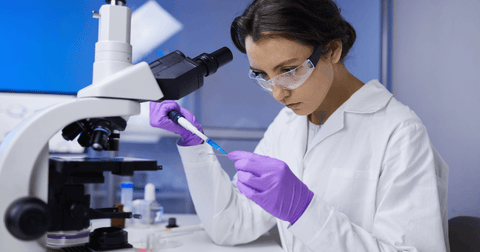In the world of scientific research, accuracy is paramount. Every drop, every measurement counts. Achieving precise results not only requires skilled labor but also the right tools.
This is where the automatic sampler for liquids come into play. It's an absolute game-changer in the world of liquid analysis.
In this comprehensive guide, we'll dive into the world of Automatic Liquid Samplers, discover how they work, and how they can help you maximize accuracy in your analytical process.
Importance of an Automatic Sampler for Liquids
Before we dive into the specifics of the automatic liquid sampler, let's understand why automation is crucial for achieving accuracy in liquid sampling.
Traditional manual sampling methods often introduce human error, leading to inconsistent results. They are time consuming and labor intensive.
On the other hand, automatic liquid samplers offer a solution by automating the sampling process. They are made to precisely collect liquid samples without human intervention, ensuring consistent and error-free results.
How Does an Automatic Liquid Sampler Work?

To maximize accuracy with an automatic sampler, it's essential to grasp how these how this technology operates. These samplers consist of a sophisticated system of pumps, valves and sensors.
Here's a simplified rundown of the whole process:
- Sample Collection: The sampler's probe or syringe collects a precise volume of liquid from the sample container.
- Transport: The Liquid is transported to the analysis instrument, often through a tubing system.
- Injection: The liquid is injected into the analytical instrument, such as a chromatograph or spectrophotometer.
- Data Logging: The sampler records data related to the sample, including the time of collection and volume.
By automating these steps, the automatic liquid sampler reduces the risk of human error and ensures each sample is handled consistently, leading to higher accuracy.
Advantages of Using Automatic Liquid Sampler
Now that we've explored the inner workings of automatic liquid samplers, let's dive into the advantages they offer for maximizing accuracy:

1. Precise Sample Volume Control
One of the primary advantages of automatic liquid sampler is its ability to control sample volume with unparalleled precision. Whether you need to collect microliters or milliliters of liquid, these samplers can do consistently, eliminating the variations that often occur with manual sampling.
2. Reduced Contamination Risk
Contamination is a significant concern in liquid sampling. With manual methods, the risk of introducing contaminants from equipment or even the operator's hands is high.
Automatic liquid samplers, however, minimize this risk by using sealed systems and disposable sample probes.
3. High Throughput
For laboratories dealing with a high volume of samples, efficiency is crucial. Automatic liquid samplers excel in this aspect, as they can work around the clock, handling multiple samples in a systematic manner. This not only saves time but also ensures that every sample is treated consistently.
4. Compatibility with Diverse Samples
Automatic samplers are versatile and can handle various sample types, from aqueous solutions to viscous liquids. Their adaptability makes them an ideal choice for laboratories dealing with a wide range of samples.
Tips for Maximizing Accuracy with your Automatic Liquid Sampler
Now that you're familiar with the benefits of automatic liquid samplers, here are some tips to ensure you get the most accurate results:
1. Regular Maintenance
Like any other equipment, automatic liquid samplers require maintenance. Regularly clean and calibrate your sampler to ensure it functions optimally. Follow manufacturer's guidelines for maintenance tasks.
2. Proper Sampling Technique
While the sampler automates many tasks, proper sample handling remains essential. Ensure that your samples are well-prepared and stored correctly to prevent any issues during the sampling process.
3. Quality Control Checks
Implement a robust quality control system to verify the accuracy and precision of your automatic liquid sampler. Periodically run control samples to detect any deviations.
4. Operator Training
Even through automation minimizes human error, operators should still be trained to use the equipment correctly. Ensure your team is well-versed in the operation and troubleshooting of the sampler.
Applications of Automatic Liquid Samplers
The versatility of the automatic sampler extends across various industries and research fields. Here are some notable applications:
1. Pharmaceutical Research

In pharmaceutical laboratories, precise liquid handling is vital for drug development and quality control. Automatic liquid samplers help ensure the accuracy of drug formations and the consistency of testing results.
2. Environmental Analysis

Environmental scientists rely on automatic liquid samplers for collecting water and samples. These instruments enable them to monitor pollutants and ensure that environmental data is reliable and accurate.
3. Food & Beverage Industry

For quality control and product development, the food and beverage industry use automatic liquid samplers to measure ingredients accurately, maintain product consistency, and adhere to regulatory standards.
4. Clinical Diagnostics

In clinical laboratories, where accuracy is critical for patient diagnoses, automatic liquid samplers play a vital role in processing blood, urine, and other bodily fluids.
Operating an Automatic Liquid Sampler
Operating an automatic liquid sampler may seem complex, but it becomes straightforward with practice.
Setting Up the Sampler
Start by calibrating the instrument and inputting the required parameters for your specific application.
Sample Collection Process
- Sample Containers: Choose the appropriate sample containers, ensuring they are compatible with the sampler's mechanism.
- Sample Preparation: Prepare the samples to be as homogeneous as possible to ensure accurate measurements.
- Sampler Configuration: Set the sampler to your desired settings, including sample volume, number of replicates, and sampling intervals.
- Initializing the Sampler: Start the sampler, and it will follow your programmed instructions to collect samples automatically.
Final Thoughts
In pursuit of accurate results, the automatic liquid sampler emerges as a powerful ally for scientists and researchers. By automating the sampling process, these devices not only save time but also eliminate the variability associated with manual methods.
Whether you're in a high-throughput laboratory or a research setting, maximizing accuracy with an automatic liquid sampler is a smart choice.
Are you using an automatic liquid sampler in your work? Share your experiences and insights in the comments below. We'd love to hear from you!
If you require any professional assistance, feel free to contact us, we'll be happy to help!





